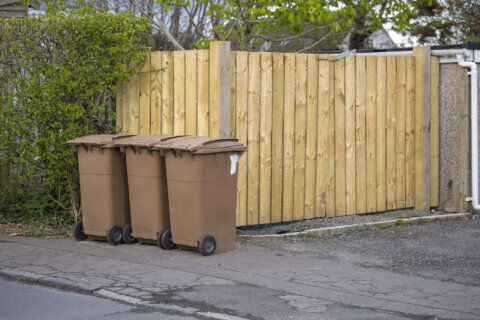This article was republished with permission from WTOP’s news partner InsideNoVa.com. Sign up for InsideNoVa.com’s free email subscription today.
This article was written by WTOP’s news partner InsideNoVa.com and republished with permission. Sign up for InsideNoVa.com’s free email subscription today.
Pre-K through fourth-grade students in Manassas City Public Schools will have the option to return to hybrid in-person learning starting March 23, but the school board Tuesday night once again declined to set any timetable for the return of older students.
For those general population students from lower grades whose guardians choose to send them to school, in-person learning will start twice per week beginning March 23. Career and technical education programs will start March 15 and other school-dependent learners will be back March 17.
But a vote to bring middle and high school students back starting April 6 failed 4-3. No replacement plan for getting those older students back into classrooms before the end of the school year was discussed, though a small number of special education and English-language learners have been receiving limited in-person instruction since the fall.
At their last meeting two weeks ago, the board indicated a willingness to bring students back even earlier, with staff presenting a plan that would’ve had pre-K through fourth-grade students back by March 15 and older students back the following week.
Instead, the new dates were presented Tuesday night. The board voted 4-3 to bring CTE, school-dependent and younger students back into classrooms. Board Chair Sanford Williams, along with members Christina Brooks, Tim Demeria, and Robyn Williams, voted for the return. But on a second motion for middle and high schoolers to be back April 6, Williams reversed his vote and the measure failed.
At the end of the meeting, Williams took some time to speak on what he saw as inconsistent messages coming from the Virginia Department of Health, Gov. Ralph Northam’s office and the federal government. Northam has called for all schools to reopen to some degree by March 15, but as Williams pointed out, Manassas remains in the highest tiers of “primary” risk metrics, according to the VDH, and the lowest in “secondary” metrics.
“It’s great to have expectations,” Williams said of Northam’s March 15 goal, “but because of the nature of this I think it’s not helpful at all, because it gives parents the expectation, and staff and students, that we’re going to open by a certain date without giving us the resources to do and explaining why it should be thus.”
Williams also said that while pediatric experts largely agree that younger learners are safe in classrooms with masking and distancing, some research has shown that the virus spreads easier in classrooms with older students.
For those pre-K and elementary school students coming back into school buildings, things inside will look very different, with the division following state and federal guidelines on masking, signage and plexiglass barriers placed in certain spots. Ventilation systems have been “inspected and adjusted to maximize the outside air intake,” according to a presentation from division staff, and all HVAC air filters will have been upgraded by the time students are back.
Additionally, all school staff will have had the opportunity to receive two vaccine doses by the end of the month. At the last meeting, the board requested that staff move start dates back by a week to allow for the second shots to have their full effect before any teachers and other staff had new teachers in the classroom. Suzanne Seaberg, who made that request two weeks ago, said Tuesday night that the COVID levels — though falling rapidly — were still too high in Manassas and voted against both motions to bring students back. She also said that at this point, moving from virtual learning to in-person would be disruptive.
“Teachers were offered the opportunity to vaccinate and vaccines do put us closer to an in-person-ready position, but vaccines aren’t everything,” Seaberg said. “Vaccines, along with other mitigation efforts, are components that we need, but metrics should also be factored in. In metrics, we’re still in the red, a highest-risk category.”
Manassas has persistently had relatively high levels of COVID transmission throughout the pandemic compared to other parts of Northern Virginia. But as of Tuesday, the 7-day average for new cases per 100,000 in population was 15.4, down from 97.4 on Jan. 17.
Demeria, the longest-serving member of the board who previously criticized Northam for pushing local school divisions to return, said he thought the risk for students who needed in-person instruction and interaction with other kids and adults was too high at this point compared to the declining risk of the virus. He, Brooks, and Robyn Williams voted in favor of setting a timeline for the return of all grade levels, saying that the board could call an emergency meeting and slow down the process if transmission started to increase again.
“I believe we have enough kids that need to get into our buildings, get out of their homes and into our buildings … I believe those children need this desperately,” Demeria said. “And I believe that the chances of transmission are extremely low, and I believe the chances of our kids mental health or physical health, they need some contact with other adults and they need to be in our buildings.”






